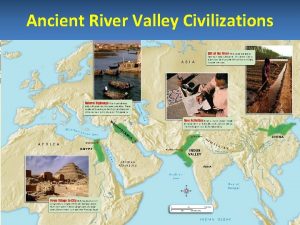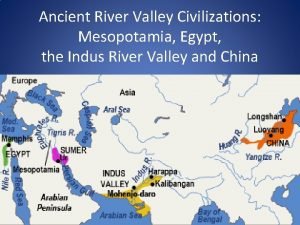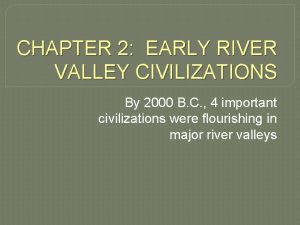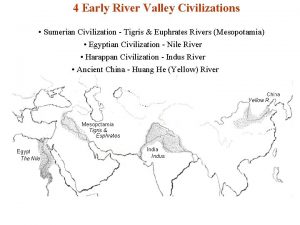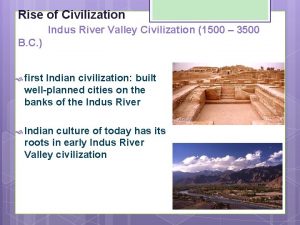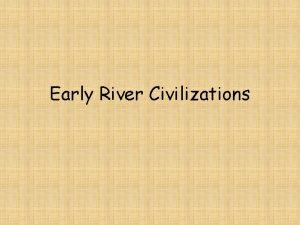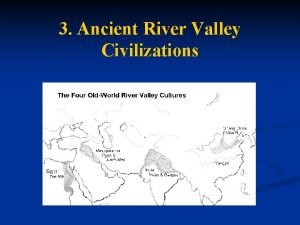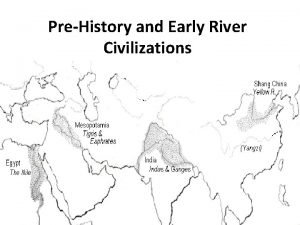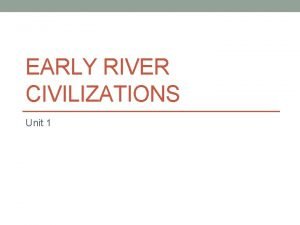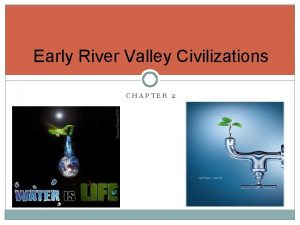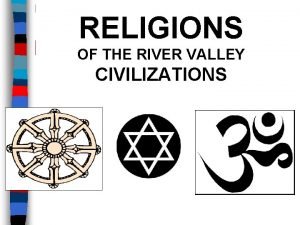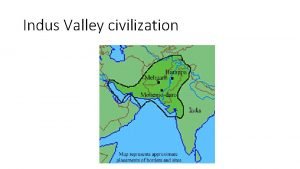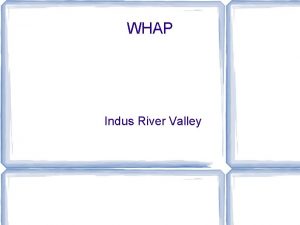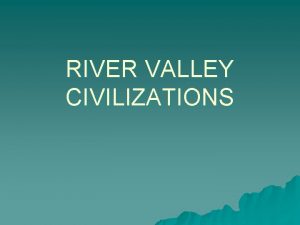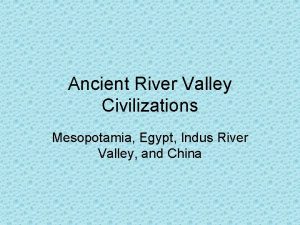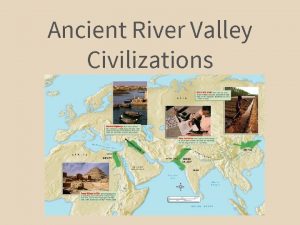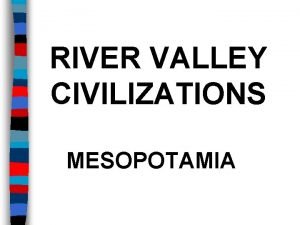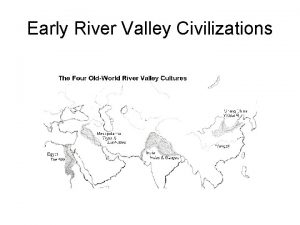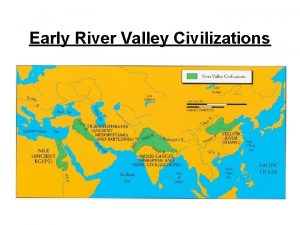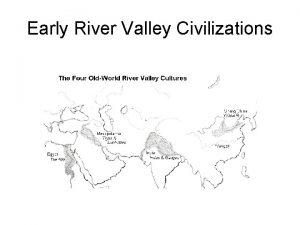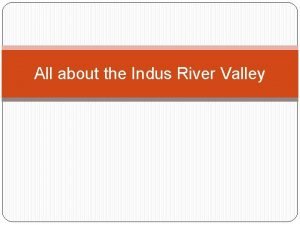Ancient Civilizations The Indus Valley Indus River Valley















- Slides: 15

Ancient Civilizations: The Indus Valley Indus River Valley: Geographic and Climate Setting Indus River Valley: Mountain Pathways and Barriers Mohenjo-Daro: The First Planned City? Indus River Valley: Harappa A Conquered People


Indus River Valley: Geographic Setting n n The Indus River Valley civilization first appeared in 2, 500 B. C. It was located in the western part of India is actually a subcontinent; a large land mass that extends out from a continent (Asia) Himalayan and the Hindu Kush Mountains to an extent isolate India from Asia


Indus River Valley: Climate n n Climate is dominated by monsoons, are heavy rains accompanied by strong winds Monsoons appear during winter from northeast region and summer monsoons are powered by the Indian Ocean Summer monsoons provide life giving rains but if weak or late they can weaken the harvest If the summer monsoon bring exceedingly heavy rains rivers will cause massive floods that can devastate villages on river fronts


Indus River Valley: Mountain Pathways and Barriers n n Passes of Hindu Kush mountains allowed invading armies to reach India The Indus River begins in the mountains and is a product of the mountain snow melting Indus eventually flows onto the floodplains of India and makes large scale faring possible Floodplains; area around a river that becomes flooded when the water levels of the river rise

Indus River Valley: Mountain Pathways and Barriers n n n Rich soil in valley provided farmers with a surplus of wheat and grain Surplus food allowed civilization to flourish and grow (villages became cities) Population grew as well because of food surpluses


Mohenjo-Daro: The First Planned City? n n 2, 500 -1, 300 B. C. Indus River Valley had planned cities Mohenjo-Daro was built on a plateau to deal with unpredictable river flooding To allow easy movement city streets were divided into squares Houses and shops were built within these squares


Mohenjo-Daro: The First Planned City? n n n To protect its citizens a citadel, a fortress, was built in the center of the city Mohenjo-Daro had a heated religious pool, storage facilities for crops, two story buildings made of mud bricks, defensive towers and a sewer system Had a written language which used pictographs; sign that expresses a thought or idea

Harappa: A Merchant City n n n Harappa, 3, 000 -1, 300 B. C. was a city built on local and international trade City trade went as far as Mesopotamia, Persia and southern India Traded intensively in gold, ivory, spices, cloth and copper Harappans domesticated animals and grew crops First to grow cotton and produce cloth

Indus River Valley: A Conquered People n n Aryans; warrior nomads, migrated into the Indus valley around 2, 000 B. C. Introduced a caste system that ranked people in society Aryans were able to conquer the Indus Valley due to natural disasters in form the of famines, devastating floods and over usage of topsoil These events allowed the Aryans to sweep across the valley region

 Ancient river valley civilizations map
Ancient river valley civilizations map Civilization ppt template
Civilization ppt template River valley civilizations vocabulary
River valley civilizations vocabulary River valley civilization map
River valley civilization map River valley civilizations def
River valley civilizations def River valley civilizations characteristics
River valley civilizations characteristics 4 river valley civilizations
4 river valley civilizations River valley civilizations
River valley civilizations Longest river in the world
Longest river in the world River valley civilizations definition
River valley civilizations definition River valley civilizations map
River valley civilizations map 4 river valley civilizations
4 river valley civilizations Chapter 2 early river valley civilizations
Chapter 2 early river valley civilizations River valley civilizations religion
River valley civilizations religion Indus river valley art
Indus river valley art Indus river valley hinduism
Indus river valley hinduism

